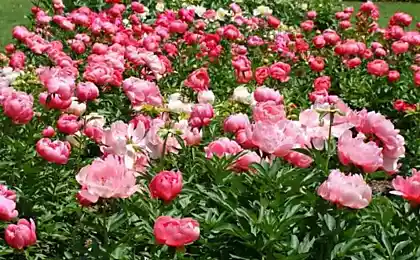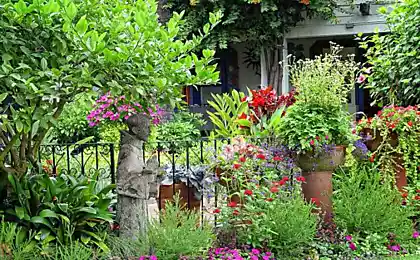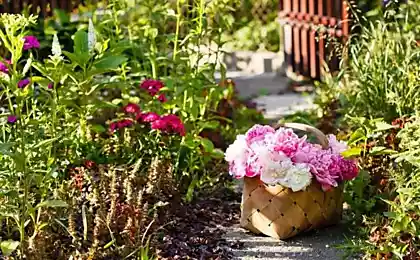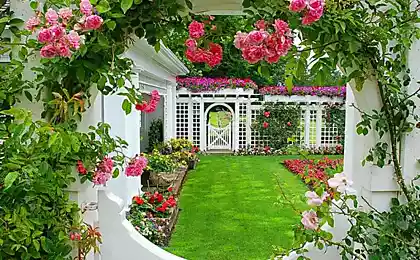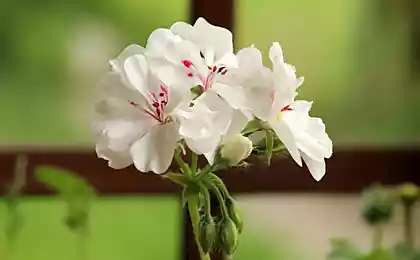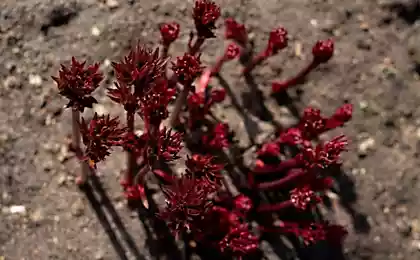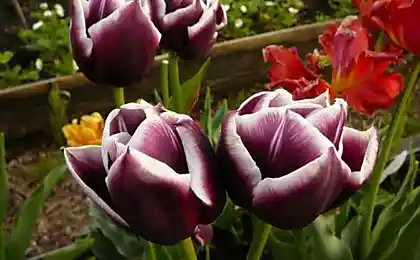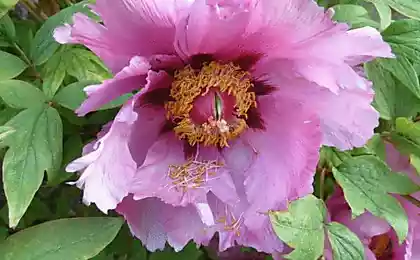160
Peonies love organic fertilizers, bloom abundantly in gratitude to the gardener
Feeding peonies after winter And in general, throughout the year - an extremely important process that allows the plant to show itself in all its glory. Powerful buds, rich bright color will make neighbors jealously rub their forehead, and the owner will bring a sea of pleasures and reasons for personal pride.

Naturally, everything must be done correctly and wisely. Otherwise, there is a risk of destroying a flower that will not be able to bloom normally. With our advice, you can, "Site" And without strain, put the house flower bed in order. To do this, you do not have to resort to expensive drugs or spend a long time in the ground. We will tell you everything in detail.
Feeding is done several times a year, and each of these processes is slightly different from each other.
This phase allows the flower to gain strength before its immediate dissolution. The most important period if you want to achieve maximum size of petals and long, abundant flowering.

The standard recipe for flower growers in this case is as follows: for a 10-liter bucket of water take 1 liter of mullet infusion and 2 tbsp. l. nitrophosca. 2 tbsp of this fertilizer will need to be diluted in 10 liters of water. Use the finished solution for root feeding. The consumption rate is 7 liters of the mixture per adult bush.

In addition, from store analogues suitable fairly well-known drug "Bouton". Its proportions are very simple: 1 g of means per 1 liter of water.
It would seem that the flower bloomed and bloomed. What else does he need for complete happiness? Ahn no. There's a little work to do. In this phase, peonies need to add phosphorus-potassium fertilizers to their diet. This technique makes the flowering process longer and brighter visually.

To prepare fertilizer, you will need ammonium nitrate, potassium sulfate and superphosphate. Exactly 20 g of each ingredient stir in 10 liters (or bucket) of water. This solution should be enough to feed 3 bushes or so.
If you really want, you can resort to more “strong” drugs. For example, in the first two years of plant life in May, young and delicate processes are sprayed with nitrogen fertilizers. Like urea. 40 g per 10 liters of water will be just right.
A couple of weeks after that, you will have to carry out another feeding. 5 g of sodium humate per 10 liters of water for root irrigation. And for leaf spraying, 40 g of urea per 10 liters of water + 1 tablet of trace elements, which you can find in any summer shop.

And the third feeding, which is held in another 15 days. Solution of heterouxin, 2 tablets per 10 liters of water. And for the leaves you will need 2 tablets of trace elements for the same 10 liters of water. For the first 2 years, peonies develop roots, so you will not achieve special flowering from them anyway. But you can strengthen the whole plant.
For the normal growth and development of peonies, the gardener must create all the proper conditions for them. For example, from time to time visually examine the surface of the plant and remove sluggish leaves and appearing seed boxes. Thus, their body will not waste its energy on unnecessary processes and concentrate on the most important: growth and flowering. The same goes for faded buds. Get rid of them as soon as you see them.

In fact, peonies are quite undemanding plants. Even without feeding, they can survive and delight you with their flowering. Of course, if the temperature regime and high soil quality are observed. But these few feedings a year will make them the real star of your garden or flower bed. Whether you do it or not is up to you.

Naturally, everything must be done correctly and wisely. Otherwise, there is a risk of destroying a flower that will not be able to bloom normally. With our advice, you can, "Site" And without strain, put the house flower bed in order. To do this, you do not have to resort to expensive drugs or spend a long time in the ground. We will tell you everything in detail.
Feeding is done several times a year, and each of these processes is slightly different from each other.
This phase allows the flower to gain strength before its immediate dissolution. The most important period if you want to achieve maximum size of petals and long, abundant flowering.

The standard recipe for flower growers in this case is as follows: for a 10-liter bucket of water take 1 liter of mullet infusion and 2 tbsp. l. nitrophosca. 2 tbsp of this fertilizer will need to be diluted in 10 liters of water. Use the finished solution for root feeding. The consumption rate is 7 liters of the mixture per adult bush.

In addition, from store analogues suitable fairly well-known drug "Bouton". Its proportions are very simple: 1 g of means per 1 liter of water.
It would seem that the flower bloomed and bloomed. What else does he need for complete happiness? Ahn no. There's a little work to do. In this phase, peonies need to add phosphorus-potassium fertilizers to their diet. This technique makes the flowering process longer and brighter visually.

To prepare fertilizer, you will need ammonium nitrate, potassium sulfate and superphosphate. Exactly 20 g of each ingredient stir in 10 liters (or bucket) of water. This solution should be enough to feed 3 bushes or so.
If you really want, you can resort to more “strong” drugs. For example, in the first two years of plant life in May, young and delicate processes are sprayed with nitrogen fertilizers. Like urea. 40 g per 10 liters of water will be just right.
A couple of weeks after that, you will have to carry out another feeding. 5 g of sodium humate per 10 liters of water for root irrigation. And for leaf spraying, 40 g of urea per 10 liters of water + 1 tablet of trace elements, which you can find in any summer shop.

And the third feeding, which is held in another 15 days. Solution of heterouxin, 2 tablets per 10 liters of water. And for the leaves you will need 2 tablets of trace elements for the same 10 liters of water. For the first 2 years, peonies develop roots, so you will not achieve special flowering from them anyway. But you can strengthen the whole plant.
For the normal growth and development of peonies, the gardener must create all the proper conditions for them. For example, from time to time visually examine the surface of the plant and remove sluggish leaves and appearing seed boxes. Thus, their body will not waste its energy on unnecessary processes and concentrate on the most important: growth and flowering. The same goes for faded buds. Get rid of them as soon as you see them.

In fact, peonies are quite undemanding plants. Even without feeding, they can survive and delight you with their flowering. Of course, if the temperature regime and high soil quality are observed. But these few feedings a year will make them the real star of your garden or flower bed. Whether you do it or not is up to you.
Jeans for each figure in the online store Mega Jeans
As a child, she ran for milk and kvass with a canon, found use for a beautiful canon.




